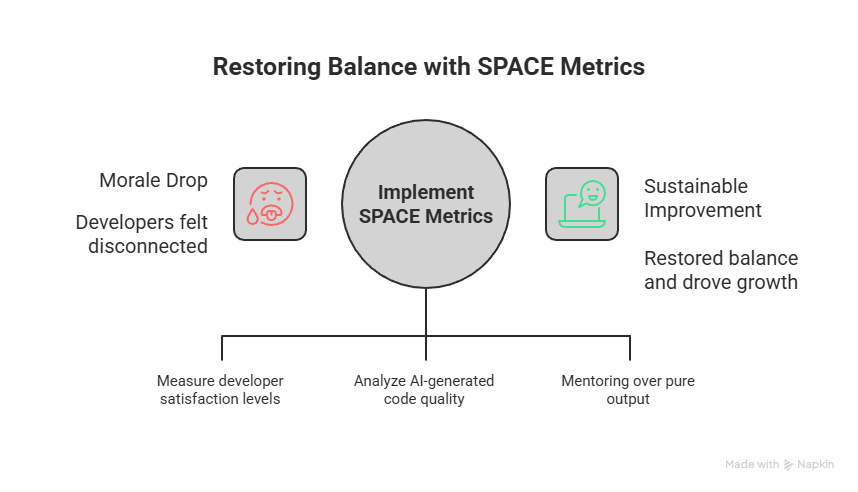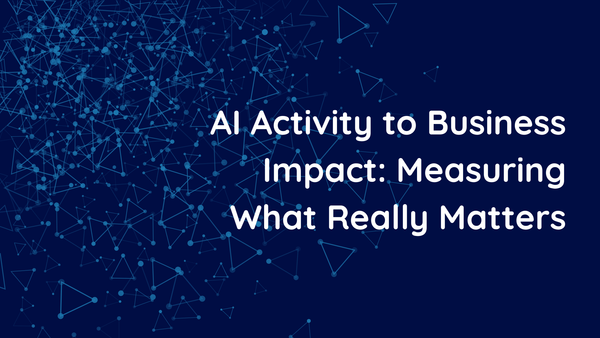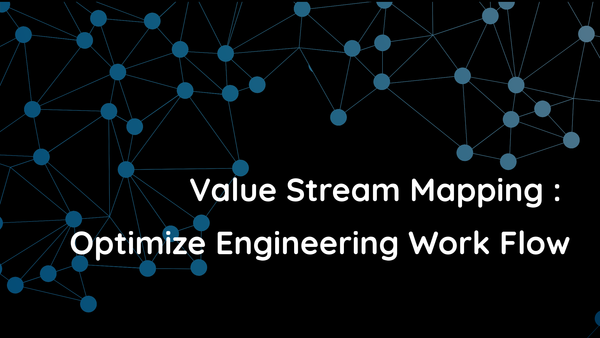AI and Engineering Metrics: Will It Replace DORA and SPACE?

AI isn’t just transforming engineering metrics; it’s forcing all of us to rethink what success in software delivery really means. When I first started tracking DORA and SPACE frameworks, both were considered gold standards for quantifying how well teams deliver software: DORA with its sharp focus on speed and reliability, SPACE for its holistic view of developer experience. But the past year? It’s become clear that AI is an accelerant, and in some ways a disruptor, for the very measurements we rely on to steer engineering performance.
The DORA and SPACE Era
Back when most teams measured deployment frequency, lead time for changes, change failure rate, and time-to-restore with religious regularity, DORA metrics were the proof points leaders carried into executive meetings. SPACE, covering satisfaction, performance, activity, collaboration, and efficiency, felt broader, almost philosophical. But both frameworks had an underlying assumption: engineering work was human-paced and human-controlled. For a while, that was true.
Enter AI: The New Performance Wildcard
In late 2024 and through 2025, I began seeing the tidal wave of AI adoption. Today, 90% of engineering teams use AI coding tools, GitHub Copilot, Gemini Code Assist, Amazon Q, and others. These tools aren’t just helping with small tasks; many organizations have seen upwards of a 25% jump in productivity, simply by having bots write boilerplate or troubleshoot bugs. Yet, as I dug into the latest DORA reports and leadership commentary, the story got complicated.
AI was proving to be an amplifier; it made disciplined, high-performing teams even better. But for teams lacking strong engineering foundations, AI didn’t just boost output; it magnified weaknesses and created “chaos delivered sooner”. Instead of just speeding things up, it shifted what we need to track and value.
Why DORA and SPACE Feel Outdated
With AI now embedded into daily workflows, I started noticing that traditional DORA metrics alone could be misleading. AI commits inflate raw activity without necessarily increasing business value. Code gets shipped faster, but is it meaningful? Is it well-reviewed? Did it actually solve the root problem, or just move technical debt around?
That’s where SPACE shines, especially in an AI-driven world. It isn’t just about outputs; it tracks satisfaction, collaboration, and whether teams are truly empowered or just overwhelmed by new tools. I’ve found that production metrics alone don’t surface team health, especially when AI bots are involved. Burnout, cognitive overload, and the need for validation suddenly become business-critical issues.
The Reality: DORA and SPACE Must Evolve
I don’t see AI “replacing” DORA or SPACE. Instead, both frameworks must evolve and converge. The smartest teams I interact with use DORA for snapshot benchmarks, velocity, deployment, and stability. But they lean on SPACE (and increasingly bespoke, AI-driven analytics) to measure deeper: the quality of code reviews, impact of AI on collaboration, developer wellbeing, and whether productivity gains are sustainable over the long haul.
Newer platforms even leverage LLMs to measure work complexity and review depth, no longer just “how many PRs shipped,” but “was the work valuable and lasting?” This is the only way, in my experience, to distinguish between “activity” and “achievement” in the era of AI-generated code.
Story: Engineering Leadership in the AI Era
Last month, I sat with a CTO whose team had shifted 30% of coding to AI tools. Their DORA metrics looked phenomenal, deployments up, incidents down. Yet, morale dropped. Developers felt disconnected from problem-solving, and reviewing AI-generated code became a full-time job. What worked? They introduced SPACE metrics to track satisfaction and flow, added AI-powered review analytics, and refocused leadership culture on mentoring, not just output. That’s what restored balance and drove real, sustainable improvement.

What’s Next?
AI will never “replace” the need for clear, meaningful engineering measurement. But it does force leaders to ask tougher questions and demand more nuanced, human-centric, and AI-aware metrics. The future isn’t DORA vs. SPACE, or metrics vs. AI. It’s recognizing that AI is rewriting the playbook, and the winners will be those who integrate system-level, collaborative, and experiential measurement into their growth strategy.
As for me, I no longer report just DORA scores or SPACE surveys. I blend them, augment with AI analytics, and challenge my teams to go beyond the numbers. Because in this new era, achievement is as much about well-being and adaptability as it is about shipping fast. And that’s how engineering leaders will thrive.
How can we help?
This is the central challenge for modern engineering leaders, and it's precisely why we built EvolveDev.io.
In the AI era, relying on traditional DORA metrics alone is like flying with a broken altimeter; it shows activity, but not altitude or direction. EvolveDev.io is the engineering intelligence platform designed for this new reality. We go beyond PR counts to give you a holistic picture.





